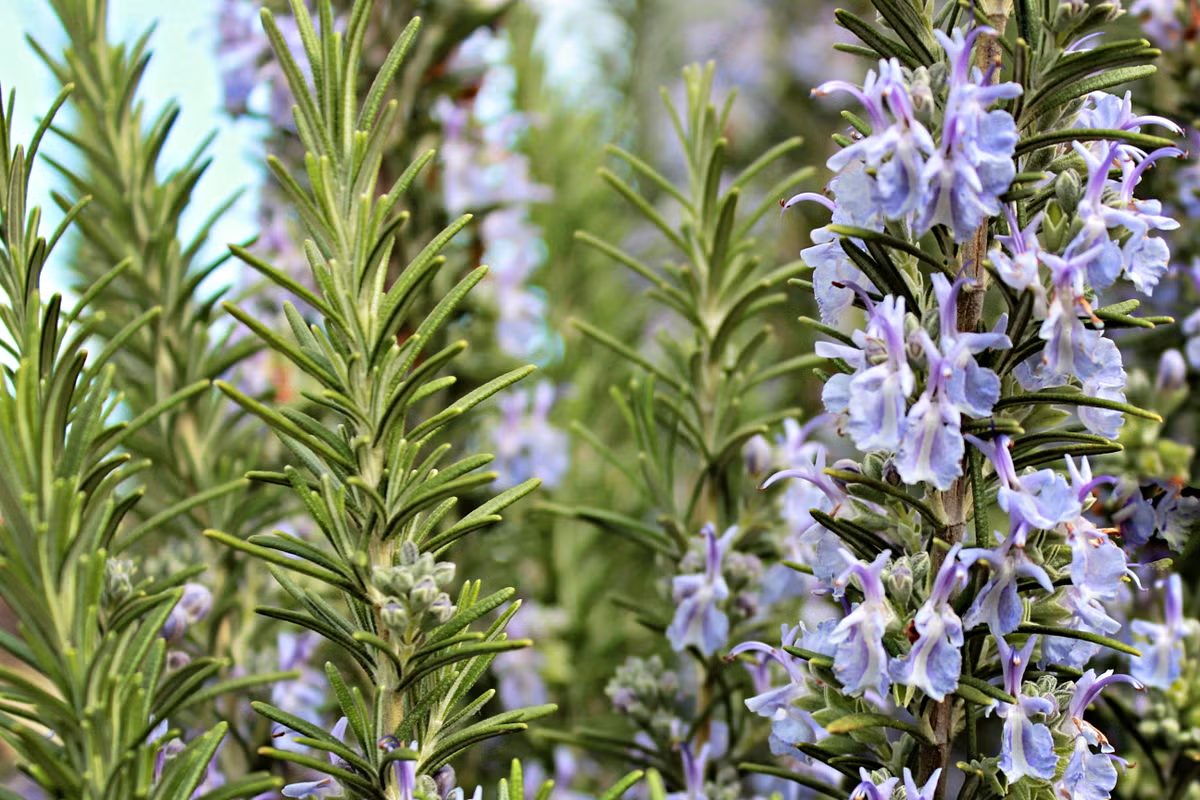
Rosemary
Rosmarinus officinalis
Basic Information
🌿 Family: Lamiaceae🗺️ Zone: 7-10
Other Names:
- Compass Weed
- Dew of the Sea
🌡️ Ideal Temperature : 50°F – 80°F
🔥 Heat Tolerance: Up to 100°F
❄️ Cold Tolerance: Down to 20°F
🌱 Type: Perennial
Layers
- Shrub
Functions
- Edible
- Medicinal
- Pollinator
- Wildlife Attractor
- Windbreaker
- Border Plant
- Pest Management
Pests
Description
Rosemary (Rosmarinus officinalis) is a woody, aromatic, evergreen herb that grows as a perennial shrub. It can reach up to 1.5 meters (5 feet) tall and produces needle-like leaves with a strong fragrance. In the right conditions, rosemary can live for decades and becomes a low-maintenance, drought-tolerant plant. It blooms in late winter through spring with small blue to purple flowers that attract pollinators.
The plant thrives in well-drained, sandy, or loamy soil with a slightly alkaline pH. Rosemary is highly drought-resistant once established and prefers warm climates with mild winters. In colder regions, it can be grown in containers and moved indoors during winter.
🌞💧 Sun and Water Requirements:
- Prefers full sun (6-8 hours of direct sunlight daily).
- Requires well-drained soil with low to moderate moisture.
- Avoid overwatering, as rosemary is susceptible to root rot.
✂️🫘 Methods to Propagate:
- Cuttings: Best method—take 10-15 cm (4-6 inch) cuttings from young stems, remove lower leaves, and root in moist soil or water.
- Layering: Bend a stem to the ground, cover part of it with soil, and allow it to develop roots before cutting from the parent plant.
- Seeds: Difficult to germinate; takes weeks to months for successful sprouting.
🧑🌾👩🌾 When to Harvest:
- Can be harvested year-round in warm climates.
- Clip sprigs as needed once the plant is well-established (after at least 1 year).
- Best flavor comes from young, fresh growth before flowering.
Purpose
Rosemary is a versatile plant with multiple functions in a permaculture system:
- Edible: Used as a culinary herb for seasoning meats, soups, and vegetables.
- Medicinal: Traditionally used to improve digestion, circulation, and memory.
- Pollinator: Flowers attract bees, butterflies, and other beneficial insects.
- Wildlife Attractor: Provides shelter and food for insects and small animals.
- Windbreaker: Acts as a low hedge or barrier against wind in gardens.
- Border Plant: Ideal for marking garden edges or pathways.
- Pest Management: Repels mosquitoes, cabbage moths, carrot flies, and other pests.